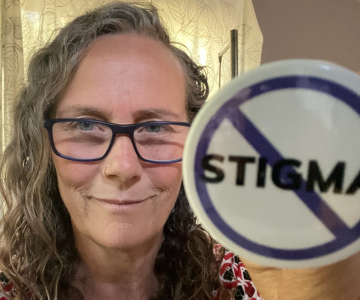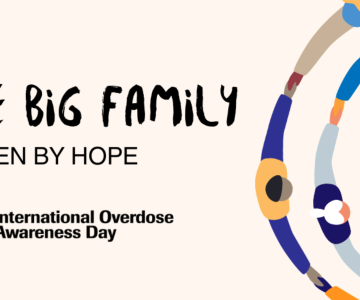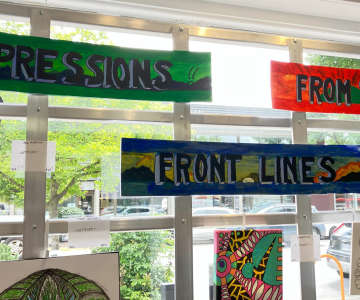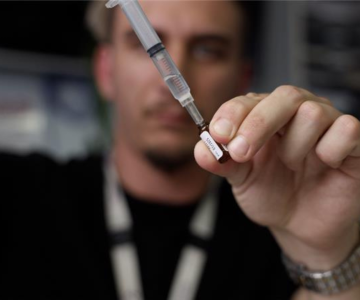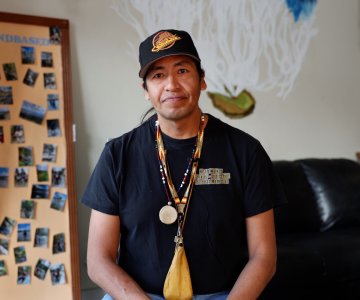Breadcrumb
Explore Stories
Health & Wellness
One of the most vulnerable times in someone’s substance use journey can be when they leave a hospital. After an overdose or medical crisis, it can be easy for them to fall through the cracks without help and supports.
Substance Use Connections, launched at Interior Health (IH) in 2019 in response to the toxic drug crisis, is a vital bridge between hospitals and community health services and supports.
“The evidence is really clear: when you make a good connection with a person who has been in a hospital, their chances of success are much higher,” shares Deb Salverda, team lead for Substance Use Connections.
Health & Wellness
Guest post by Alison Houweling, harm reduction coordinator with Interior Health
With International Overdose Awareness Day (IOAD) here, I think about the concept of stigma. Stigma is a hot button topic and honestly, I think some people are tired of hearing the word. But it is one of the most significant barriers to people getting help.
Stigma often brings to mind the idea of judgment and negative views happening to a person. What is not explored is the internalized and perceived stigma that happens within a person. Understanding that aspect of stigma could be a gamechanger for how we connect with people who use substances. To better understand these internal experiences, I will share my own experience of stigma and substance use.
Community & Culture
International Overdose Awareness Day (IOAD) on August 31 brings together a global community to take action on overdose. This year’s theme, One Big Family Driven by Hope, reminds us that these losses do not just shatter individual families; they fracture entire communities.
“International Overdose Awareness Day is a time to bring communities together—to remember the lives we have lost, to support those still living with the impacts of this crisis, and to stand as allies in the work ahead,” shares Alison Houweling, a harm reduction coordinator with Interior Health.
“Substance use is a health concern. Like any other health-related activity that can lead to adverse outcomes, it requires a health response: treatment of those outcomes and options that promote health.”
Community & Culture
Interior Health Peers from the Vernon Downtown Mental Health and Substance Use Clinic are leading a grassroots art initiative titled Expressions from the Front Lines: A Journey through the Toxic Drug Crisis.
The unique exhibit, on display at the Okanagan Regional Library and Gallery Vertigo, brings together a collection of heartfelt artistic expressions from those with lived and living experiences in recognition of International Overdose Awareness Day on August 31, 2025.
Health & Wellness
Naloxone is a widely available medication that can temporarily reverse the effects of an opioid overdose. It has been a vital tool in combatting the toxic drug crisis since B.C. launched the Take Home Naloxone program in 2012.
Anyone using unregulated drugs is at risk of a toxic drug poisoning. If there is a chance you may witness or experience a toxic drug poisoning, you can get a free naloxone kit to carry with you. Many pharmacies provide them, as do health centres and community agencies. You do not need a prescription, and you do not need to provide your name.
Naloxone is safe to use on people of all ages.
“Naloxone is the number one intervention we have that can avert a death and remains a vitally important part of the toxic drug response efforts,” says Jessica Bridgeman, manager, Harm Reduction. “It’s simple, easy to use, and so important to help keep our community members, clients, friends and family safe.”
Health & Wellness
Andrea* walks into the pharmacy sporting casual clothes and sneakers, a purse slung over her shoulder. Small jewellery studs dot her face, and her warm, friendly face is framed by a short bob.
For the past two years, Andrea has been coming to this pharmacy two to three times a week to have her fentanyl patches changed by a registered nurse. Since she started the fentanyl patch program—under a broader program known as prescribed safer supply—she’s gone from living in a tent city in Kelowna to full-time employment, owning a car and renting a place of her own.
*Name changed to protect client's privacy and identity.
Health & Wellness
Derrick Zabotel estimates he’s lost more than 80 family members and friends due to the opioid crisis.
“I have a stack of obituaries this big,” he gestures with his hands. "Grief is one of the hardest things to deal with in life…because you just get over the passing away of a relative or a friend…then you don't even have the time to grieve for that person and there's already another one who's passing away. So it's affected me deeply."
Originally of the Bonaparte First Nation in Cache Creek, Derrick’s Secwépemc name, Snéwt n péllêllkwé7, means Wind over Water. He’s a member of Interior Health’s Peer Advisory and works with ASK Wellness in Kamloops. He hopes to become an Indigenous Peer Navigator to be able to support programs that connect spiritually and culturally with Indigenous People.
In the following video, he shares his story of addiction and grief, and the impact the toxic drug crisis has had on him these past nine years since the declaration of the toxic drug crisis public health emergency in B.C.
Health & Wellness
Content warning: This story deals with abuse, substance use and suicide.
Trauma has long been recognized as a powerful force that can shape a person’s life, impacting not just their emotional and psychological health, but physical well-being as well.
When trauma happens, especially early in life, it has the potential to change how the brain develops. It can disrupt our body’s ability to regulate stress hormones and affect key areas of the brain that control our emotions and behaviours.
In this story, learn about trauma and its effects on our brains, nervous system and peoples' lives. You'll also hear from Linnea, a Peer Volunteer with Interior Health. Linnea shares her story of trauma and substance use, displayed as quotes throughout the story. We also share some of her poetry and photography that she posts on Instagram.
-
Showing 8 of 8
Sign up for email updates
Receive news, alerts, public service announcements and articles right to your inbox.



